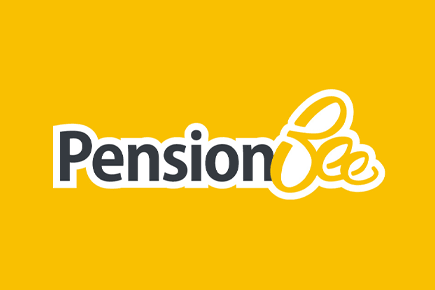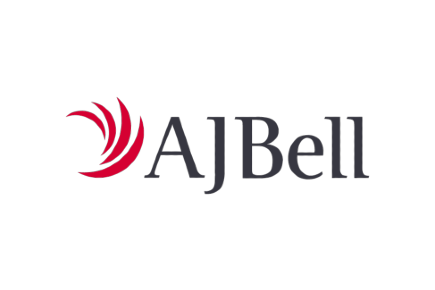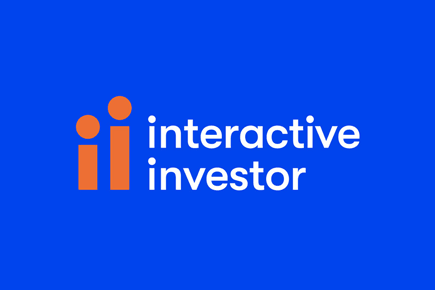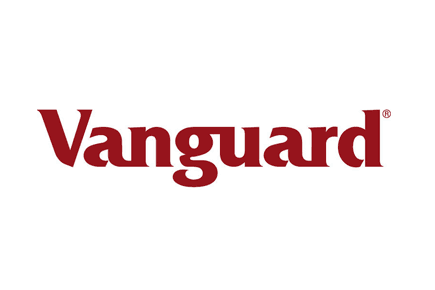If you’re considering using pension drawdown when you come to access your retirement savings, you’ll surely want to know which pension provider is most suitable for you.
Read on to discover which providers I’ve found who could offer you the best performing drawdown pension UK.
Also consider: Best Performing Pension Providers for Private Pensions
5 best pension drawdown providers for October 2024
While a pension drawdown is a popular choice for retirement, not every pension provider will offer an income drawdown pension plan.
So, below is my selection of some of the best pension drawdown providers across the UK pension market, based on factors such as their range of services and associated costs.
Best drawdown pension providers at a glance
PensionBee
- Finds and consolidates all existing pensions for you
- Provides a low cost solution to all your pension needs
- No fees for transferring, combining, contributing to and withdrawing pensions
| Type of pension | Minimum investment | Fees | Accepts transfers? | Minimum fund required for drawdown |
|---|---|---|---|---|
| Ready-made portfolios. | £0. | 0.28% – 0.95% annually. | Yes – final salary and defined contribution pensions. | No minimum. |
PensionBee is a newer pension provider that was founded in 2014.
The service allows you to consolidate one or more pensions under a single scheme and then invest those funds in their range of ready-made portfolios known as “plans”.
PensionBee charges no fees to withdraw your holdings if you choose drawdown. However, the exception to this rule is if you transfer your pension to them and then take your whole pot within the first 12 months.
In this case, you may be charged.
Capital at risk.
AJ Bell
- Pensions Options: DIY & Ready-made
- Annual Fee: 0% – 0.25%
- Min. Investment: £1,000 lump-sum. No minimum for regular pension contributions
| Type of pension | Minimum investment | Fees | Accepts transfers? | Minimum fund required for drawdown |
|---|---|---|---|---|
| Self-invested personal pension (SIPP). | £1,000 lump sum. No minimum for regular contributions. | 0 – 0.25% annually. | Yes – final salary, defined contribution, and capped drawdown pensions. | No minimum. |
AJ Bell is a well-established provider of pension and investment services. The company started operating in 1995 and is now listed on the FTSE 250 index.
The broker is one of the best providers for value and cost, as it’s free to open the AJ Bell self-invested personal pension (SIPP) and fees are just 0.25% for smaller pension funds. You can also buy investments for as little as £1.50.
When choosing pension drawdown with AJ Bell, you can expect to pay a £25 drawdown fee for taking a one-off payment of your tax-free lump sum, income payment, or a small lump sum.
Meanwhile, regular drawdown payments or lump sums will cost you an annual service fee of £100.
Remember that investments go up and down in value, and you could lose money as well as make it. How you’re taxed will depend on your circumstances, and the rules can change.
Hargreaves Lansdown
- Investment Options: DIY & Ready-made
- Annual Fee: 0.1% – 0.45%
- Min. Investment: £100 lump-sum or £25 a month
| Type of pension | Minimum investment | Fees | Accepts transfers? | Minimum fund required for drawdown |
|---|---|---|---|---|
| Self-invested personal pension (SIPP). | £100 lump sum or £25 a month. | 0.1% – 0.45% annually. | Yes – final salary, defined contribution, and capped drawdown pensions. | £1,333.33 – or £1,000 if tax-free lump sum already taken. |
Hargreaves Lansdown is one of the most well-known investment and pension providers in the UK, boasting more than £100 billion in client assets under management, as of May 2022.
The platform offers access to more than 3,000 investment funds, shares, and more, with fees depending on how much you have invested with them.
This can be a good option for pension drawdown as there are no fees to drawdown funds from your pot. You can also change and even stop withdrawals without incurring charges.
Hargreaves Lansdown offers a pension drawdown calculator on their website that can give you valuable insight into whether pension drawdown is a sensible option for you.
interactive investor
- SIPP costs £12.99 a month
- Free to join and free to leave
- Trading costs: £5.99 for UK shares and ETFs, funds, investment trusts and US shares
| Type of pension | Minimum investment | Fees | Accepts transfers? | Minimum fund required for drawdown |
|---|---|---|---|---|
| Self-invested personal pension (SIPP). | No minimum. | £12.99 a month for SIPP. £5.99 per trade for a range of investments. | Yes – see provider site for types of accepted transfers. | No minimum. |
One of the largest investment platforms in the UK, interactive investor announced the launch of its new self-invested personal pension (SIPP) in March 2022.
As of May 2022, interactive investor has £55 billion of assets under management, making it the UK’s largest flat-fee investment provider.
The SIPP that interactive investor provides gives you access to a range of assets, from shares and funds to investment trusts and more.
As you can see in the table above, you will pay a flat fee of £12.99 service fee to hold the account. Each trade then typically costs a fee, starting from £5.99.
Crucially, as you pay a monthly fee for your SIPP, interactive investor won’t charge a fee to move funds into drawdown. So, while the upfront monthly cost of the SIPP can seem off-putting, there may be savings to be made when it comes to drawdown fees.
Special offer: £100 – £3,000 cashback*
Transfer a pension worth £10,000 or more before 31st August and claim between £100 – £3,000 cashback.
*Terms & fees apply. Capital at risk.
Vanguard
- Investment Options: DIY & Ready-made
- Annual Fee: 0.15% capped at £375
- Min. Investment: £500 lump sum or £100 per month
| Type of pension | Minimum investment | Fees | Accepts transfers? | Minimum fund required for drawdown |
|---|---|---|---|---|
| Self-invested personal pension (SIPP). | £500 lump sum or £100 per month. | 0.15% annually, capped at £375. | Yes – see provider site for types of accepted transfers. | No minimum. |
Vanguard is the oldest investment and pension provider on this list, having been founded in 1975 by John Bogle. Bogle is best known as the “father of index funds”, as these funds tracking underlying indexes were first provided by Vanguard.
Vanguard’s pension is a highly competitive option, offering access to a range of the platform’s investments and funds with a percentage-based fee. This fee also has an upper cap of £375, meaning you’ll never pay more than this amount in a year.
There are no additional charges when you go into drawdown with the Vanguard SIPP, making it a potentially cost-effective option to use for going into drawdown.
Remember: If you’re unsure whether one of these providers is suitable for you, make sure you seek independent financial advice. All these providers are authorised and regulated by the Financial Conduct Authority (FCA), the UK’s financial regulatory body.
What is pension drawdown?
Pension drawdown, also sometimes referred to as “income drawdown” or “flexi-access drawdown”, is a method of withdrawing part of your pension funds while leaving the remainder of your money invested.
When you put your pension into drawdown, it means that you can take income from it as and when you need it. You can do this from age 55, rising to 57 in 2028.
Meanwhile, you can leave the rest of your pension fund invested, allowing your money to continue potentially generating returns in the stock market.
You can only use pension drawdown if you have a defined contribution pension, not a defined benefit (or “final salary”) pension.
Pension Freedoms created more flexibility for retirement income
Pension drawdown has been a popular option for many retirees since the introduction of the Pension Freedoms legislation in 2015.
In the past, the only way to access your retirement savings was typically to purchase a pension annuity, a type of insurance product that then provides a guaranteed income for life.
The Pension Freedoms legislation massively changed the game when it came into effect, providing savers with more flexibility and choices over how they can access their pension pot.
Pension drawdown tax rules
Naturally, there are a few pension drawdown rules that you may want to keep an eye on if you choose this method for your retirement. These particularly revolve around tax.
Taking your tax-free lump sum
From age 55 (rising to 57 in 2028), you’re able to access the first 25% of your pension funds as a tax-free lump sum.
So, for example, imagine that your pension contained £100,000. That means you’d be entitled to 25% of it tax-free, so that’s £25,000.
That means, when you go into drawdown, you could take the first 25% of your pension tax-free.
Drawing small lump sums
Alternatively, you can draw smaller lump sums from your pension, with the first 25% of each withdrawal being tax-free.
Let’s use the same example above of a £100,000 pot, of which £25,000 would be available tax-free.
Rather than taking that all at once, you could spread this amount out across withdrawals.
So, if you made an initial withdrawal of £20,000, 25% would be tax-free – so in this case, £5,000. The remaining £15,000 would then be taxed as income.
That means you’ve taken £5,000 of your 25% tax-free lump sum, leaving £20,000 of tax-free cash left for you to take from your pot however you’d like.
This way, you can continue drawing an income that has a 25% lump sum of tax-free cash over a longer period of time.
Income Tax on remaining funds
As you come to draw the rest of your pension savings after your tax-free amount, you may also be subject to Income Tax. This will be calculated at your marginal Income Tax rate.
In the 2022/23 tax year, the Income Tax rates are the following:
- Personal Allowance: Up to £12,570 – 0% tax
- Basic rate: £12,571 to £50,270 – 20% tax
- Higher rate: £50,271 to £150,000 – 40% tax
- Additional rate: over £150,000 – 45% tax
Of course, how much tax you’ll face will largely depend on how much income you draw, as this will define your taxable income.
For example, if you chose to draw less than the Personal Allowance from your pension, you wouldn’t owe any tax on your pension savings.
Making sensible income withdrawals can reduce the overall tax bill you’ll have to pay.
The Money Purchase Annual Allowance
One threshold you may want to bear in mind when using income drawdown is the Money Purchase Annual Allowance (MPAA).
The MPAA typically comes into effect when you go into drawdown on your pension, reducing your pension Annual Allowance from the standard amount (up to £40,000 in 2022/23) to just £4,000.
That means you’ll only receive tax relief on the first £4,000 of your pension contributions in a single tax year once you’re in drawdown and taking income.
Generally speaking, you won’t trigger the MPAA if you put your pot into drawdown but don’t yet start taking income.
Remember: the MPAA only affects defined contributions pensions, not defined benefit schemes.
Also consider: My guide on how long it takes to withdraw money from your pension
Need help with your pension?
Knowing whether income drawdown from your pension is suitable for you can be difficult. Fortunately, there are a couple of places you can turn to for help if you’re unsure about what’s best for you.
The Money and Pensions Service
A combination of the Money Advice Service, the Pensions Advisory Service, and Pension Wise, the Money and Pensions Service (MaPS) is a service backed by the Department of Work and Pensions.
The MaPS is the provider of the MoneyHelper website, where you can access a range of impartial information and advice on pensions and retirement to help you make decisions about your future.
The site still offers the Pension Wise service, in which you can book a free appointment and receive specialist pension guidance.
This can be a great resource for finding information about your pension options, including whether you might choose pension drawdown.
Seek independent financial advice
Aside from free advice available online, you may also benefit from speaking to an independent financial adviser.
An adviser will be able to make personalised recommendations for you based on your individual financial circumstances and wider life goals, giving you the confidence that the decisions you’re making with your pension are suitable and appropriate for your needs.
You can search for an adviser near you using the tool on our website.
Pros and Cons of a Drawdown Pension
When considering a pension drawdown for your retirement, it’s worth noting the following pro and cons:
Pros
- Get immediate access to tax-free cash
- Flexible income according to your requirements
- Income tax control
- Your funds benefit from tax-efficient investment growth
- No need to purchase an annuity
- Ability to withdraw unlimited amounts
- Death benefits choices for family and dependants
Cons
- Your income level could change with your to investment or fund performance
- Any investment returns are not guaranteed
- Large income withdrawals might not be sustainable
- Increased administration costs
Drawdown Pension FAQs
How does pension drawdown work?
Which is the cheapest pension drawdown provider?
What is the difference between a capped and flexible drawdown?
Please note
A pension is a long-term investment. The fund value may fluctuate and can go down, which would have an impact on the level of pension benefits available. Your pension income could also be affected by the interest rates at the time you take your benefits. The tax implications of pension pot withdrawals will be based on your individual circumstances, tax legislation and regulation, which are subject to change in the future.
- Learn how to invest in the FTSE100
- Have you considered transferring your pension?
- Find the best trading platforms





